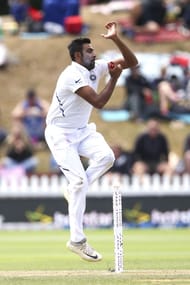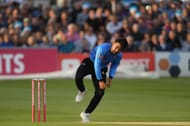The year is 1999. Imagine a war of words between Indian and Australian fans. The Indian says, "we have Harbhajan and Kumble", flaunting the team's famous spin attack. The Australian, in reply, says "we don't need two spinners. We have Shane Warne".
Cut to 2019. The same battle of words continues. The Indian will now say "We have Ashwin and Ravindra Jadeja" and the Australian says "we have Nathan Lyon". What is the primary difference between these two conversations? The answer lies in the bowling styles.
Finger spinners have taken over the Test arena replacing wrist spinners and have been the most favoured options for selectors in the longer format. Wrist spinners, on the other hand, are choosing the shorter format of T20 over Test cricket.
Spinners: Understanding the basics
Spinners are primarily of two types: Leg (or wrist) and Off (or finger) spinners. In modern-day cricket, finger spinners are expected to be accurate and hit the right areas, as accuracy and discipline are what make them valuable.
On the other hand, leg spinners are expected to use their variations to the fullest extent and pick up wickets at regular intervals. One of the sought-after skills of a leg spinner is his ability to spin the ball both ways, i.e. into and away from the batsman.
In recent times, with the invention of carrom ball as well as the doosra, finger spinners like Mujeeb-Ur-Rahman and Ravichandran Ashwin have also developed the art of spinning the ball both ways.

An off-spinner is suitable to the longer format of the game as discipline and accuracy are the key aspects of bowling in a test match.
The current set of spinners in Test Cricket consists of Ravinchandran Ashwin and Ravindra Jadeja from India, Nathan Lyon from Australia, Keshav Maharaj from South Africa, and many others.
Among them, Ravichandran Ashwin and Nathan Lyon are among the best bowlers in the longer format and have been at the forefront of their respective countries' bowling attacks. Ashwin and Lyon are currently ranked 12th and 16th respectively in the ICC Bowlers' rankings in a format dominated primarily by fast bowlers.
Impact of T20 and Franchise Cricket on Spinners
The invention of T20 cricket was expected to be the death of spin bowling. As the format tried to make power hitting its primary requirement, it led experts to believe spin bowling had neared its end. But, spinners were ready for the challenge.
Spinners started finding huge success in the format and were amongst the leading wicket takers across various franchise leagues. Wrist spinners were able to sell their art better in T20s since their strength lies on variations.
As T20 is a format where a single over can change the context of the game, a leg spinner with his bag of tricks can play a huge role in winning games for the team. The likes of Yuzvendra Chahal, Adam Zampa, Rashid Khan, and many others bring a lot of variety onto the table and have the ability to pick wickets at regular intervals even though a few of their spells might prove to be costly.
ICC T20 bowlers’ rankings show 9 among the top 10 bowlers being spinners, with 5 of them being wrist spinners.

T20 has had a huge impact on the game of cricket. It has drawn more people into the stadiums and fulfilled so many dreams. A stint at a franchise league might decide the future of a cricketer. This is probably the reason why every player tries to give his best in these leagues.
Rashid Khan entered the franchise league picture in 2017 and has brought a lot of value to his name and as well as the art of wrist spin.
The value a leg spinner adds to a T20 team is higher than what he adds to a Test team. This might be the reason why there are very few leg spinners in the longer format currently as compared to a few years ago.
Currently, Yasir Shah is the only full-time leg-spinner among the 9 Test playing nations as most of them have full-time finger spinners. Todd Astle and Mitchell Swepson were in the reckoning for spots in Tests but the slots were already filled by regular finger spinners.
Also, the financial aspect of T20 franchise cricket comes under consideration. A leg spinner can earn good money by just bowling 4 overs a day whereas, in Test cricket, the body will take a beating as he is expected to bowl 30-40 overs in an innings. Since wrist spinners are finding such huge success with comparably lesser effort in T20s, the format attracts the practitioners of this art.
So, is money the actual reason behind this migration of wrist spinners to T20s? This is a discussion for another day. The current scenario shows that there is a very evident shift in format preference of leg spinners from Tests to T20s.
Wickets play a huge role in a T20 game and influence the results to a great extent. Wicket-taking is easier for leg spinners when compared to off spinners as the uncertainty coming from the release of the ball plays a major role in deceiving batsmen. Modern-day leg spinners are using this tool of the trade to the best extent by playing a format that suits them the most.
Click here to get India Squad for T20 World Cup 2024. Follow Sportskeeda for the T20 World Cup Schedule, Points Table, and news
